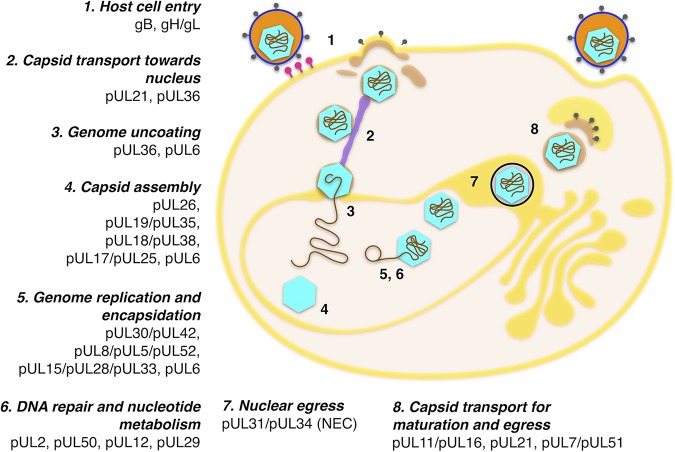FIG 5.
Central interactome complexes in the herpesvirus life cycle. The sequential steps in a herpesvirus lytic life cycle are indicated with numbers. The complexes present in the reconstructed central interactome participating in each of the stages are also annotated. Upon viral entry mediated by virus envelope-cell membrane fusion (step 1), the tegument is delivered into the host cell and capsids are transported to the nucleus (step 2). Docking to the nucleopores triggers genome uncoating (i.e., delivery to the nucleus) (step 3). In a lytic replication, a procapsid is formed (step 4), and genome replication, capsid maturation, and genome encapsidation occur concomitantly (steps 5 and 6). Capsids egress from by budding at the nuclear membranes (step 7). The bulk of the tegument is acquired in the cytoplasm, primarily by fusion with trans-Golgi network-derived vesicles (step 8). Fusion of these vesicles with the plasma membrane upon virion maturation releases the virions to the extracellular space (step 8). Correspondences between ORF nomenclature, UniProtKB identifiers, and functionally informative tags for each protein can be found in Table S1 and Table S2.

